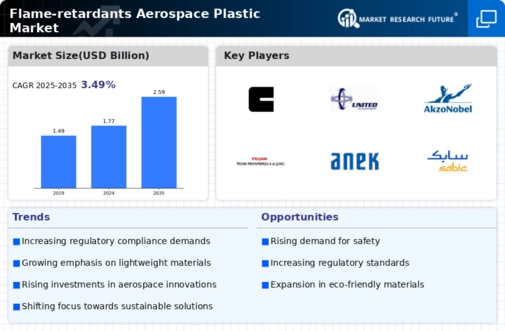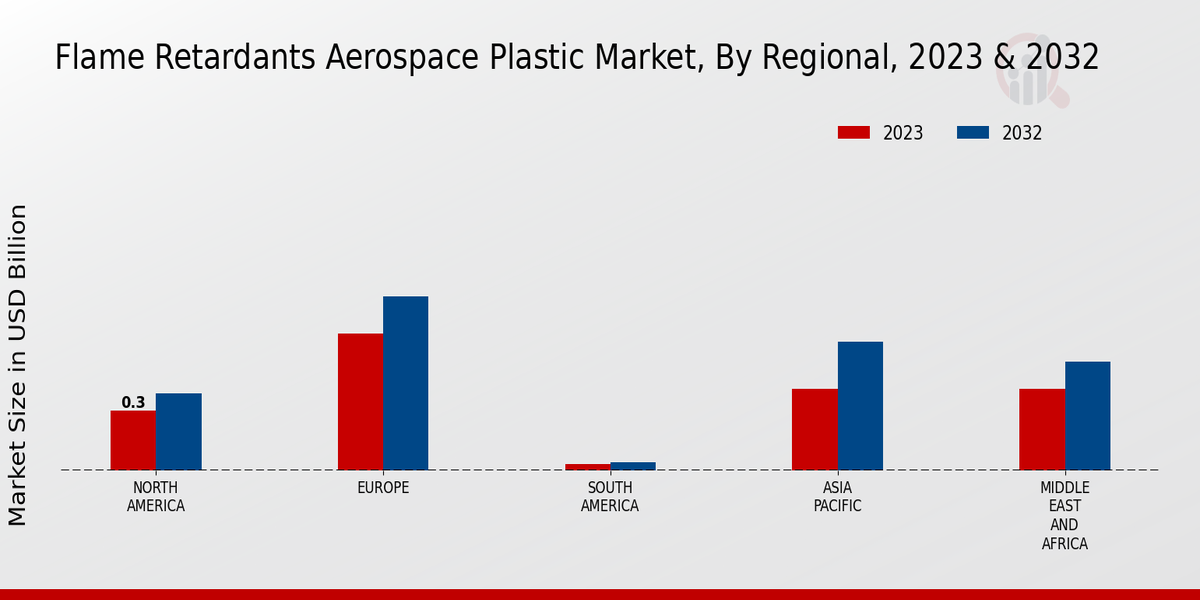Market Growth Chart
Stringent Regulatory Standards
The Global Flame-retardants Aerospace Plastic Market Industry is significantly influenced by stringent regulatory standards imposed by aviation authorities worldwide. These regulations mandate the use of flame-retardant materials in aircraft interiors and components to enhance passenger safety. Compliance with such regulations often necessitates the adoption of advanced flame-retardant plastics, which can withstand high temperatures and resist ignition. As a result, manufacturers are increasingly investing in research and development to create materials that meet these rigorous standards. This focus on compliance not only drives innovation but also contributes to the market's projected growth, with an anticipated increase to 2.59 USD Billion by 2035.
Rising Focus on Passenger Safety
The Global Flame-retardants Aerospace Plastic Market Industry is increasingly driven by a rising focus on passenger safety within the aviation sector. Airlines and manufacturers are prioritizing the use of flame-retardant materials in aircraft interiors to mitigate fire risks and enhance overall safety. This heightened awareness has led to a surge in demand for advanced flame-retardant plastics that comply with safety regulations and standards. As airlines strive to improve their safety records and passenger confidence, the adoption of these materials is expected to grow. This trend is likely to contribute to the market's expansion, as the industry adapts to evolving safety expectations and regulatory requirements.
Global Expansion of Aerospace Industry
The Global Flame-retardants Aerospace Plastic Market Industry benefits from the global expansion of the aerospace industry, which is witnessing increased investments in new aircraft development and modernization of existing fleets. Emerging markets are particularly active in expanding their aviation capabilities, leading to a higher demand for advanced materials, including flame-retardant plastics. As countries invest in expanding their air travel infrastructure, the need for safer and more efficient aircraft becomes paramount. This growth trajectory is expected to bolster the market, with projections indicating a rise to 2.59 USD Billion by 2035, reflecting the industry's commitment to enhancing safety and performance.
Increasing Demand for Lightweight Materials
The Global Flame-retardants Aerospace Plastic Market Industry experiences a notable surge in demand for lightweight materials, driven by the aerospace sector's ongoing quest for fuel efficiency and performance enhancement. Lightweight plastics, particularly those with flame-retardant properties, are increasingly favored in aircraft manufacturing to reduce overall weight and improve fuel economy. For instance, the adoption of advanced flame-retardant plastics is projected to contribute to the market's growth, with the industry expected to reach 1.77 USD Billion in 2024. This trend aligns with the aerospace industry's broader sustainability goals, as manufacturers seek to minimize environmental impact while maintaining safety standards.
Technological Advancements in Material Science
Technological advancements in material science play a pivotal role in shaping the Global Flame-retardants Aerospace Plastic Market Industry. Innovations in polymer chemistry and processing techniques have led to the development of new flame-retardant plastics that exhibit superior performance characteristics. These advancements enable manufacturers to produce materials that are not only lightweight and durable but also possess enhanced flame resistance. The integration of nanotechnology and other cutting-edge techniques further enhances the properties of these plastics, making them suitable for various aerospace applications. As a result, the market is poised for growth, with a projected CAGR of 3.51% from 2025 to 2035, reflecting the ongoing evolution of material capabilities.























